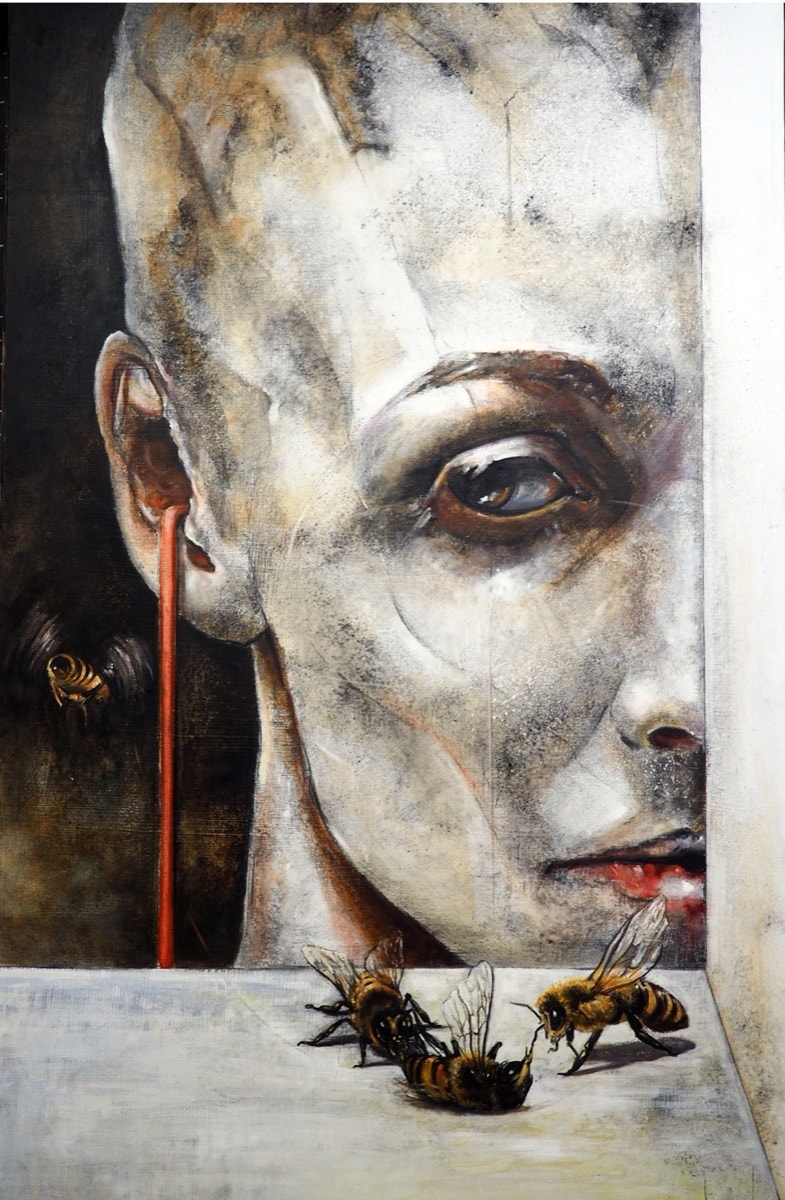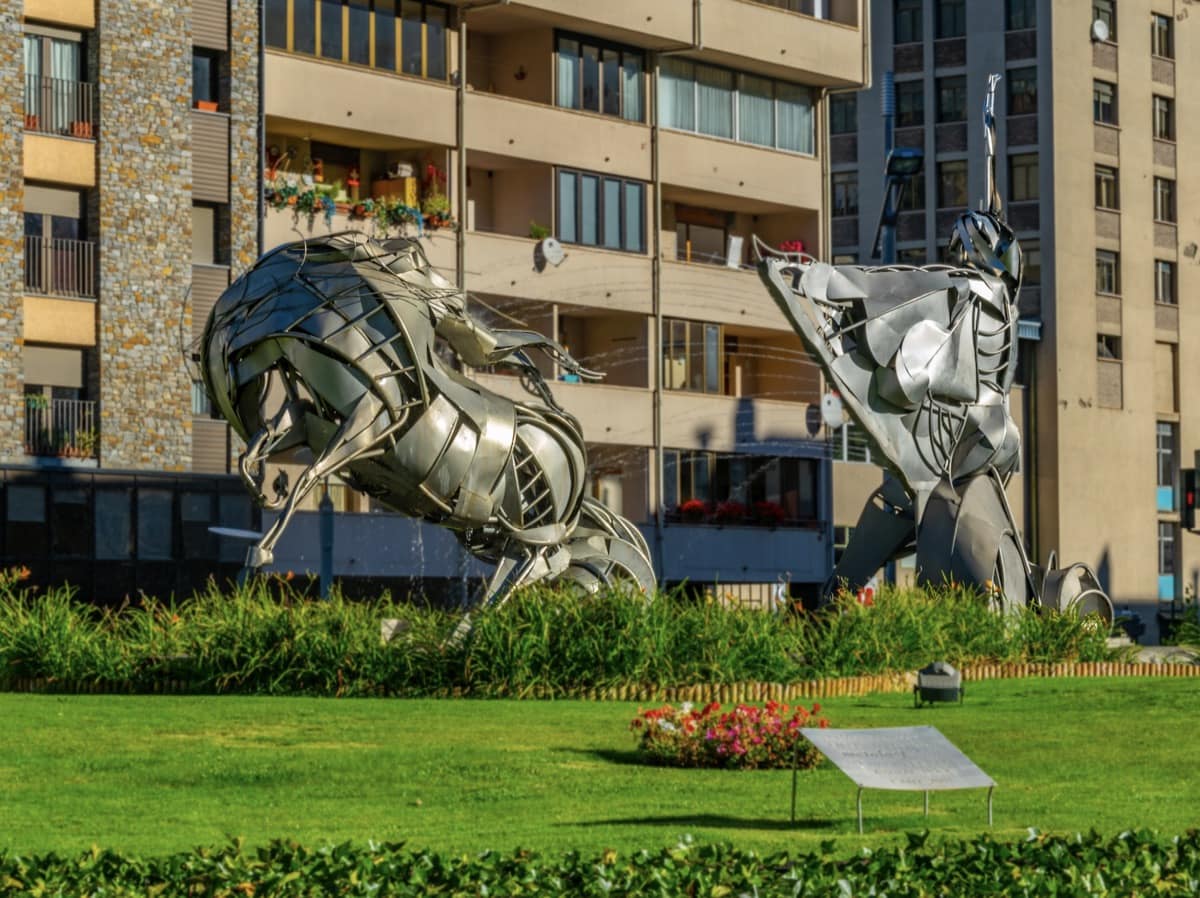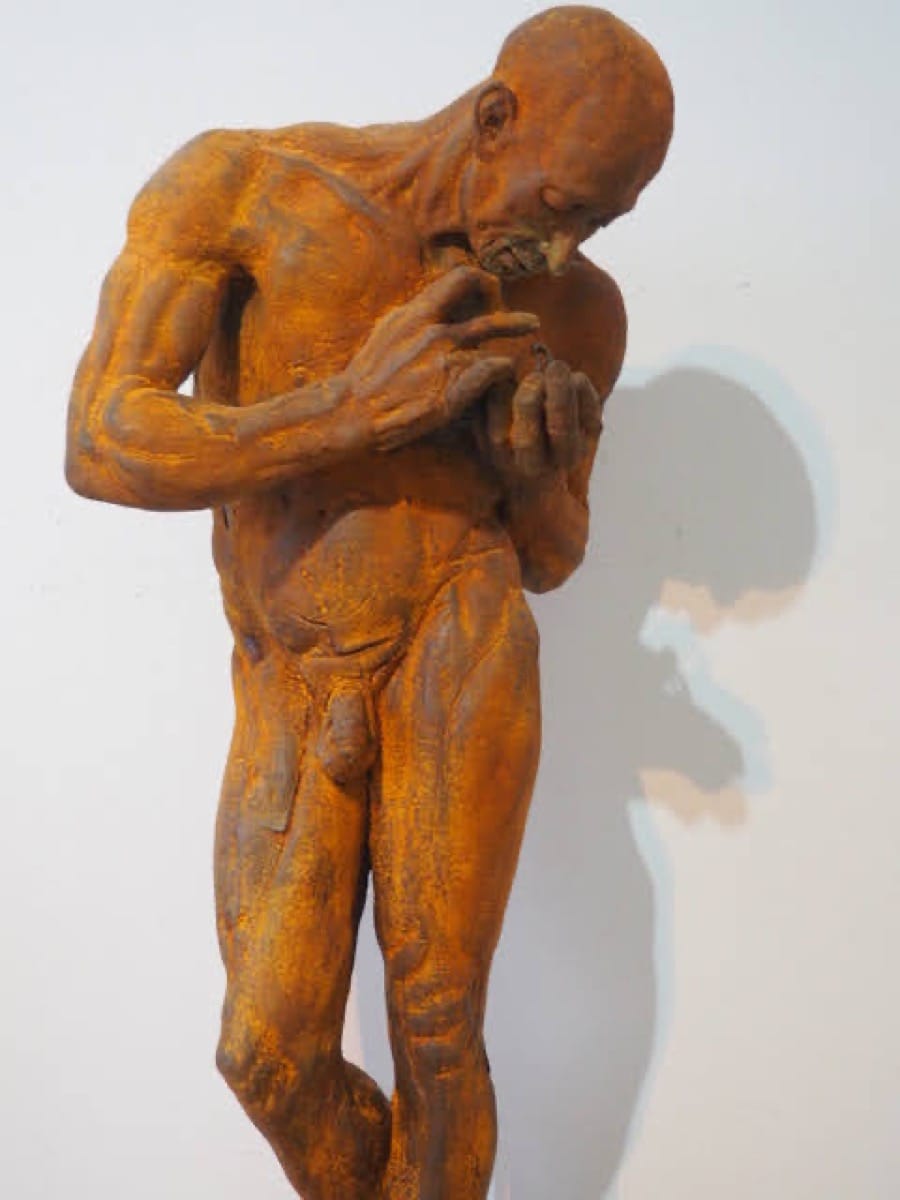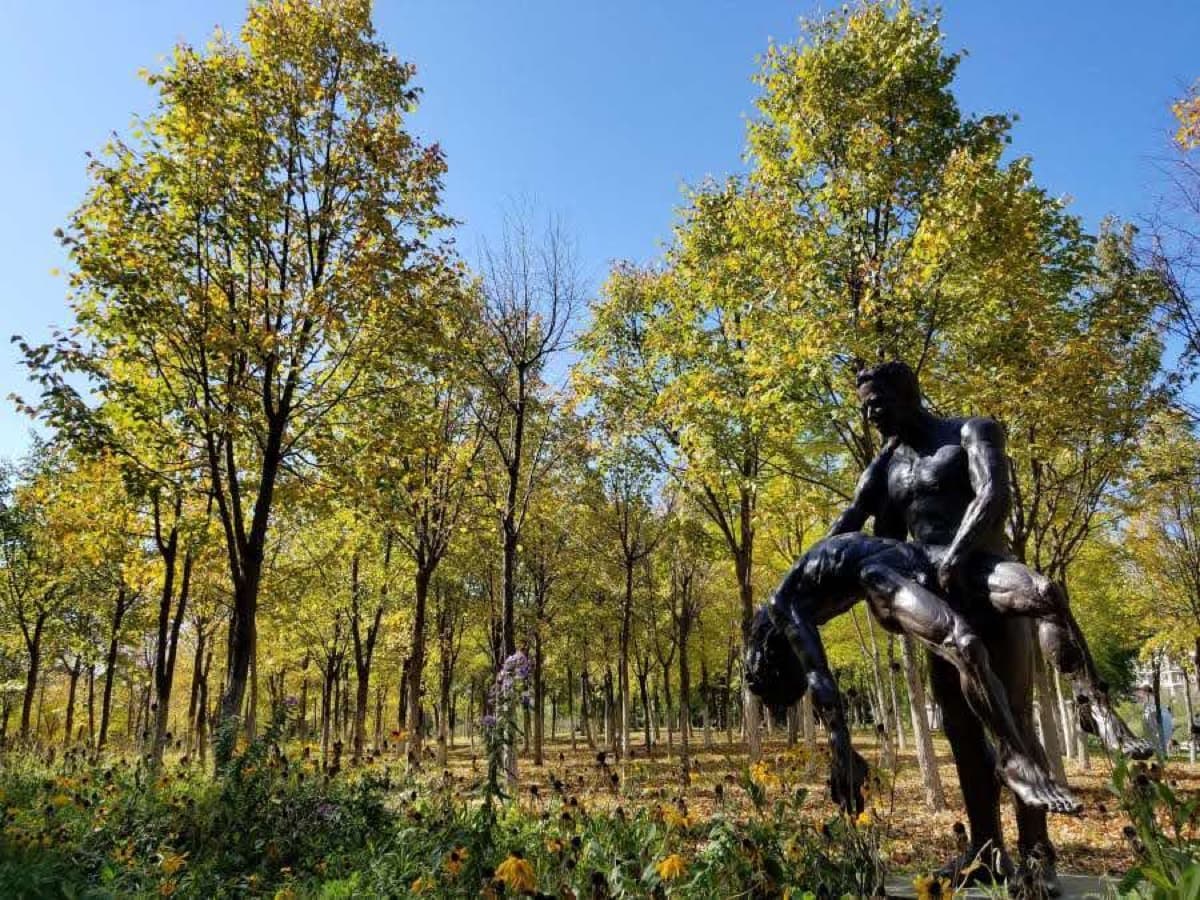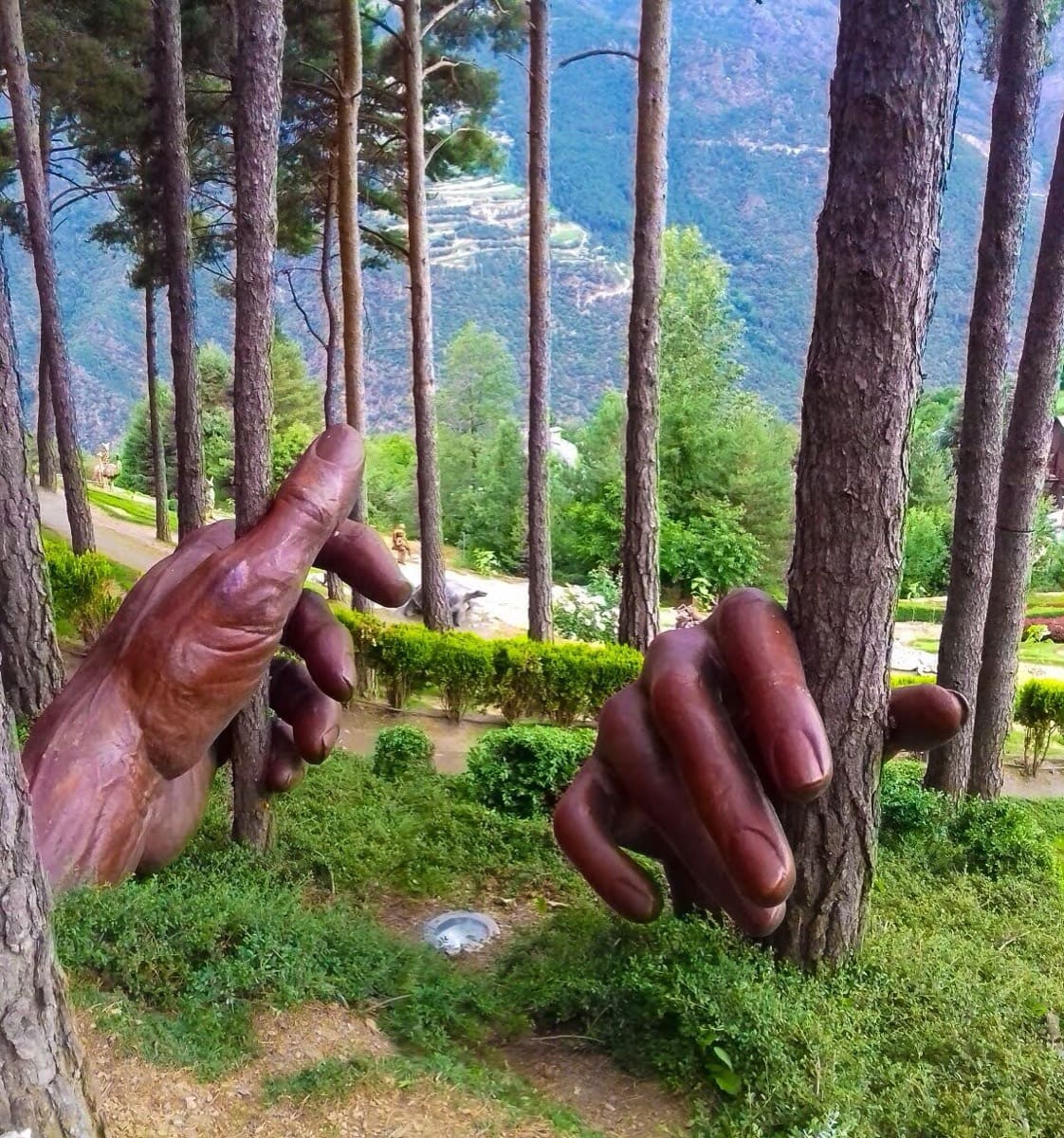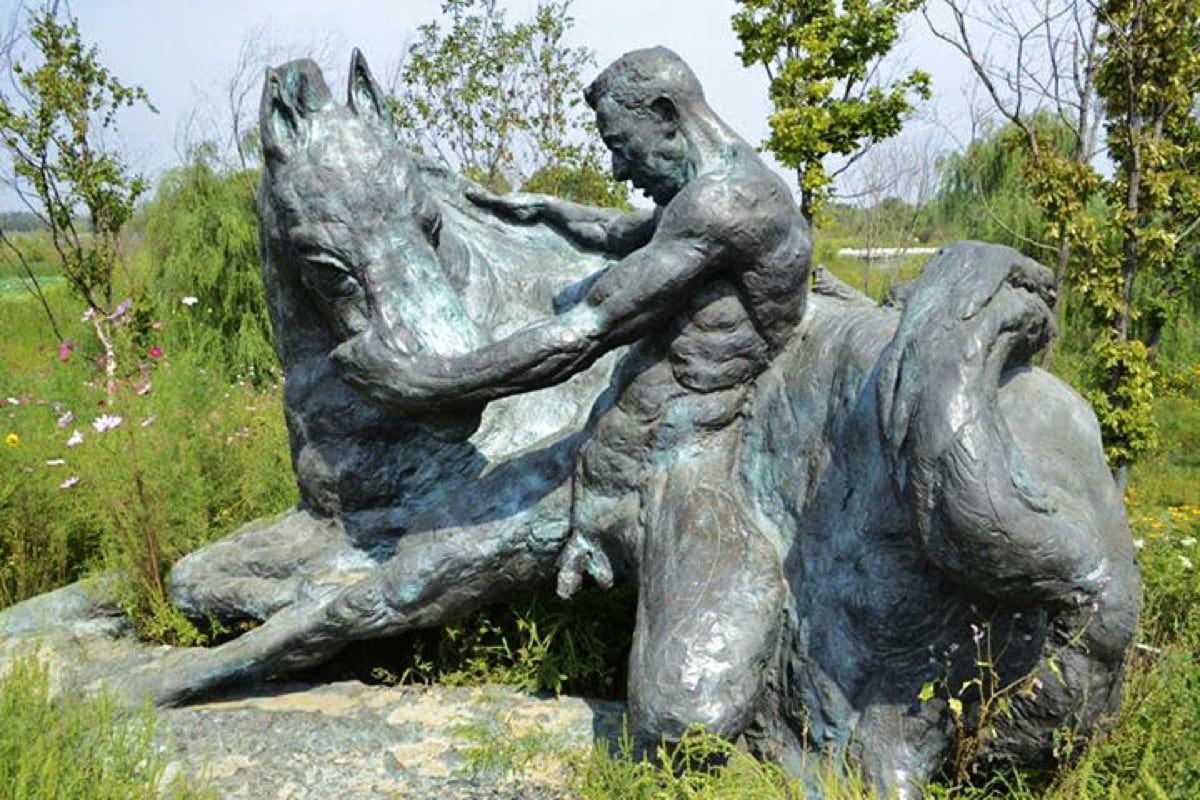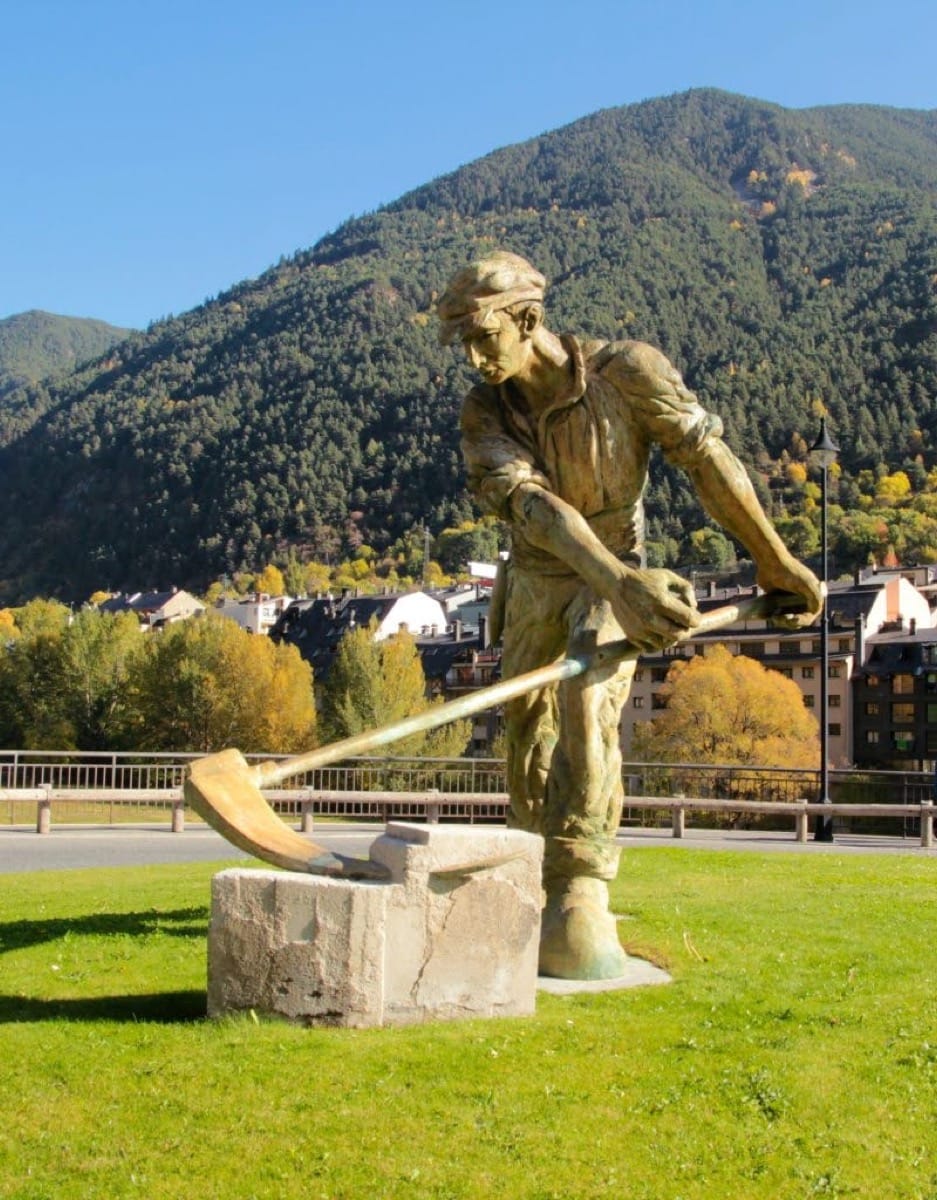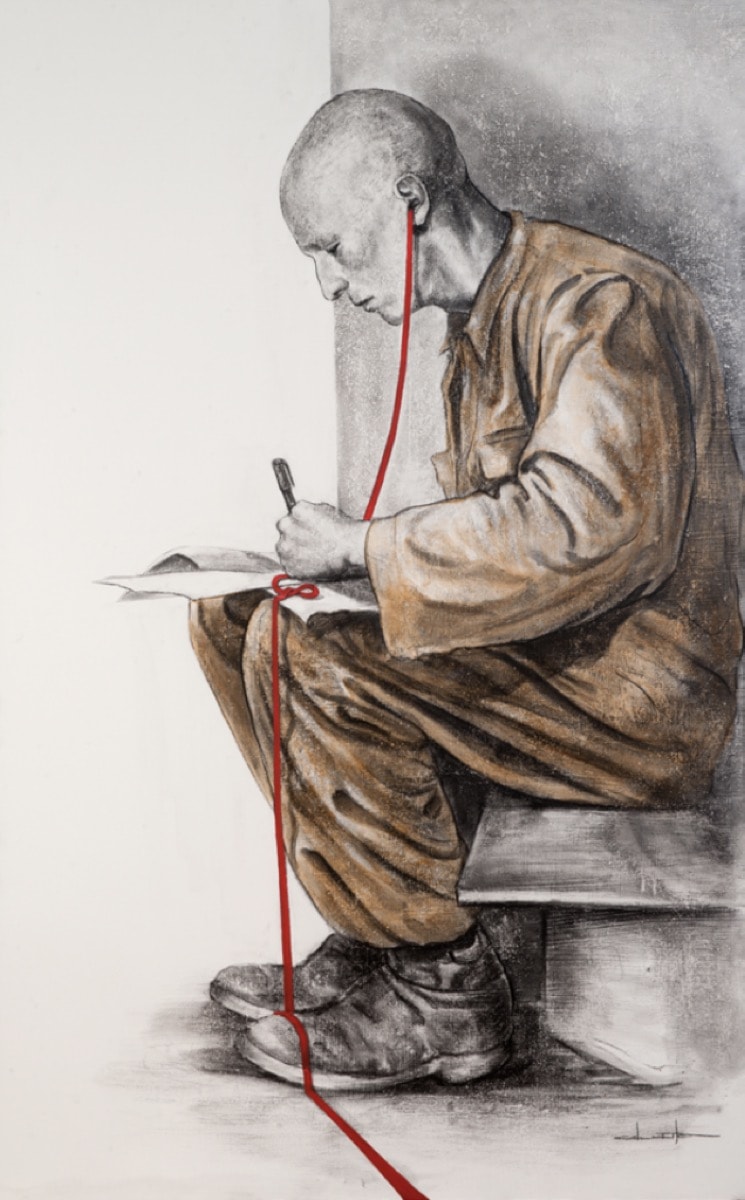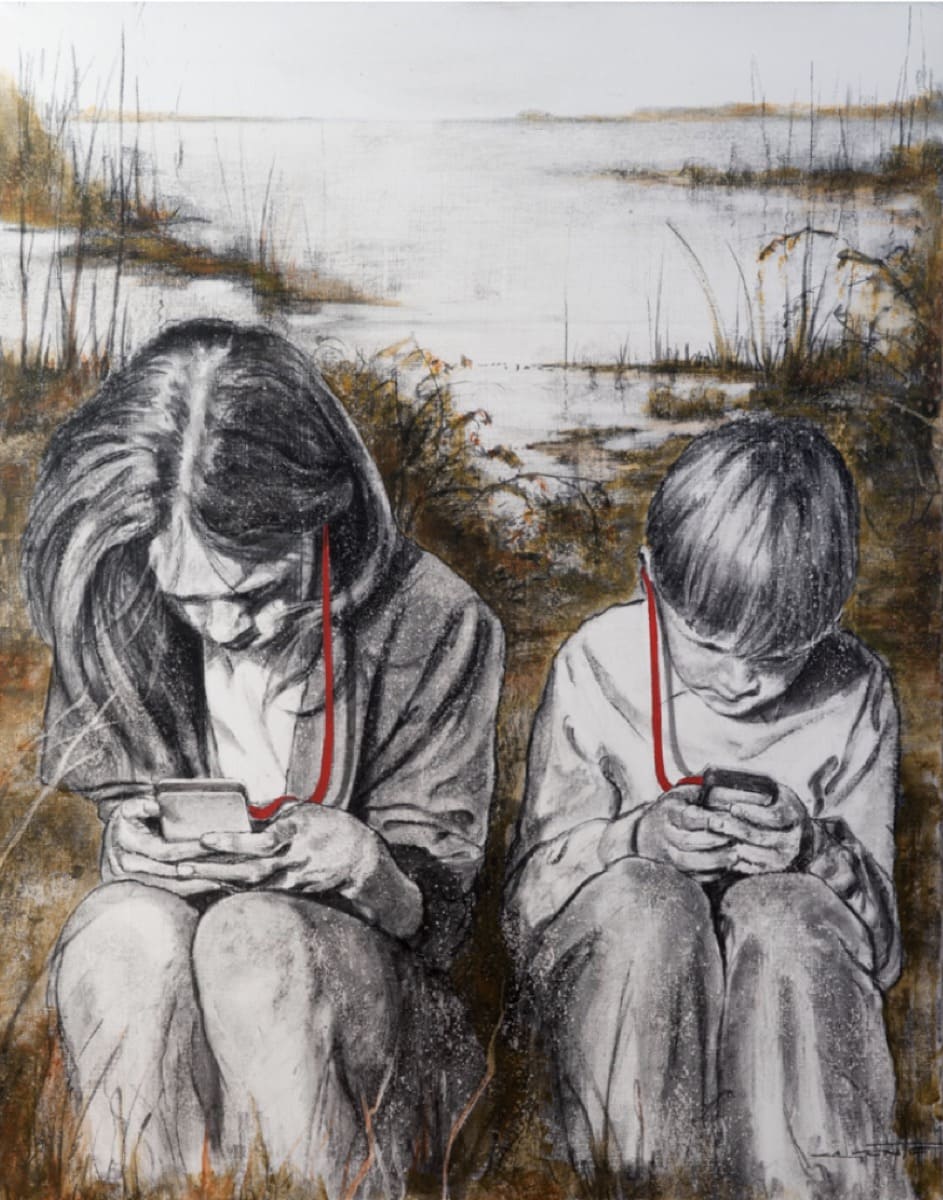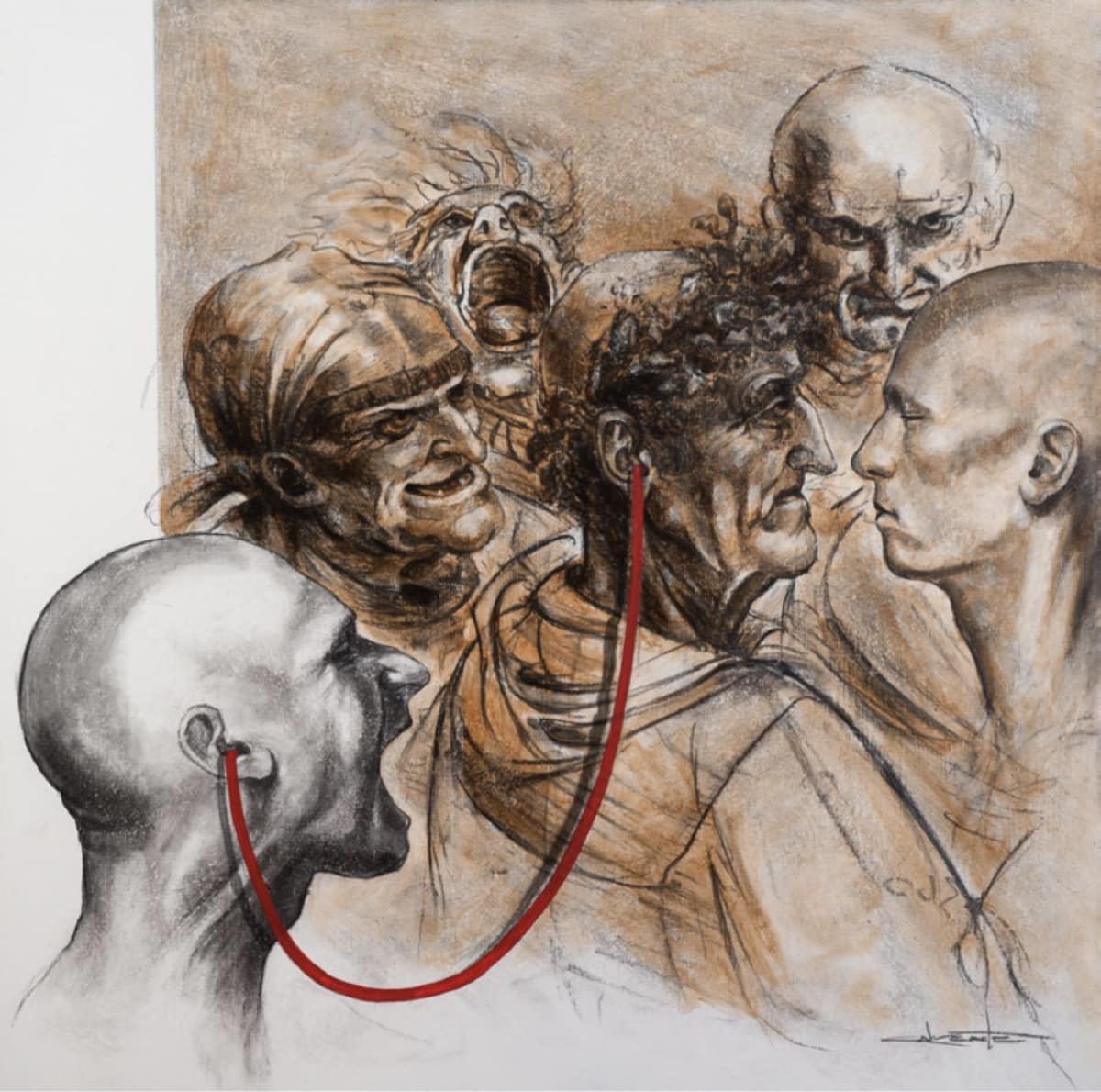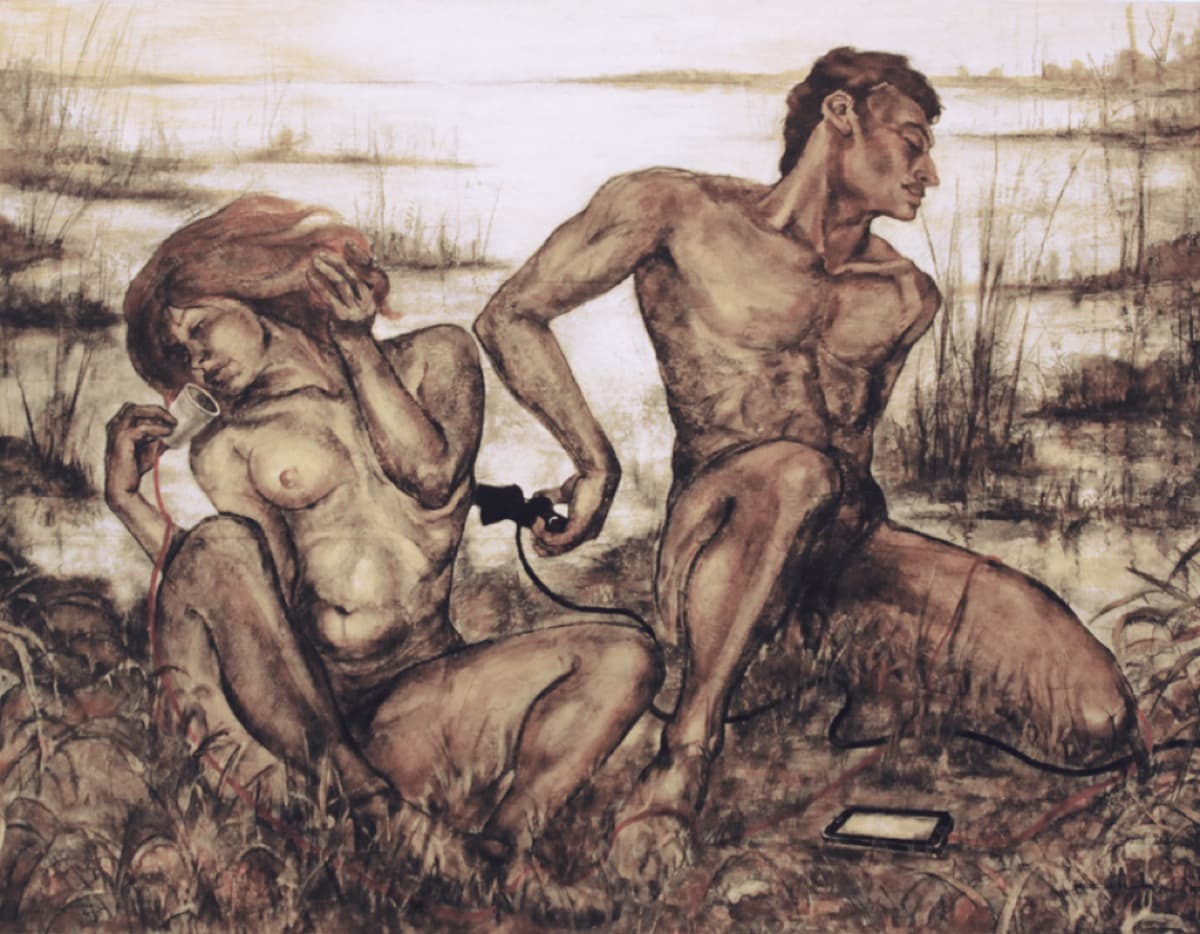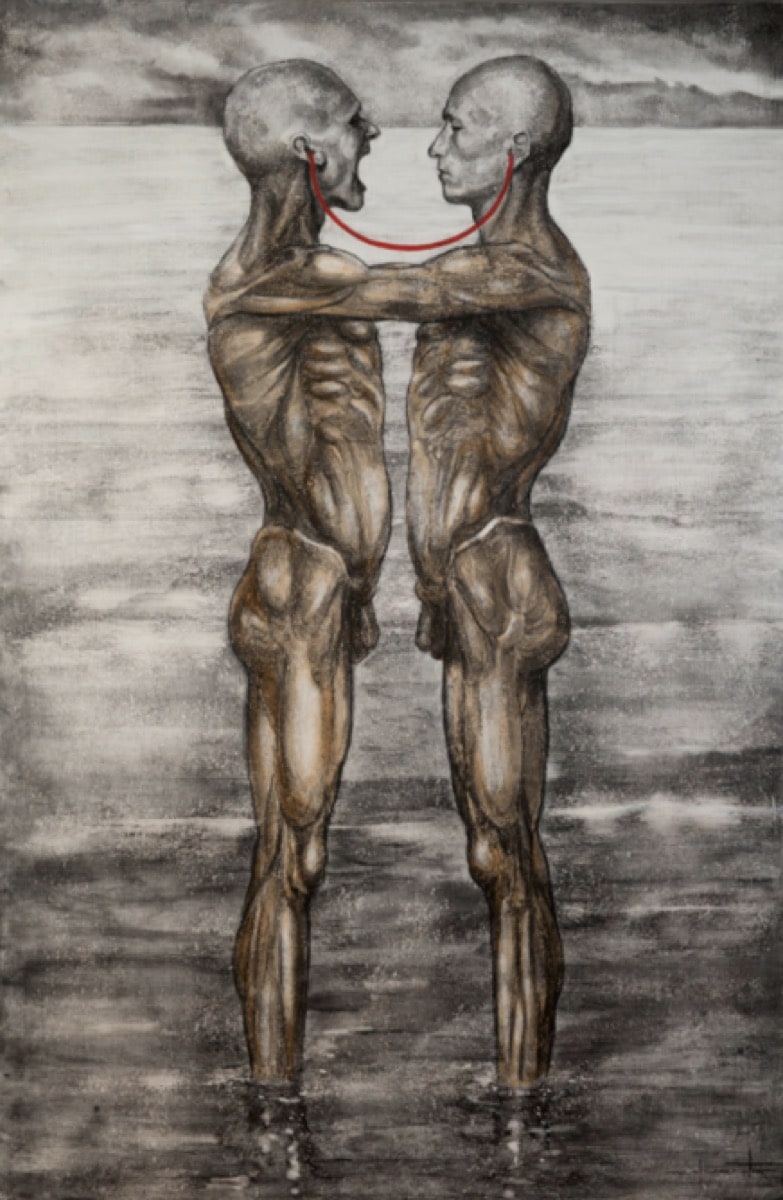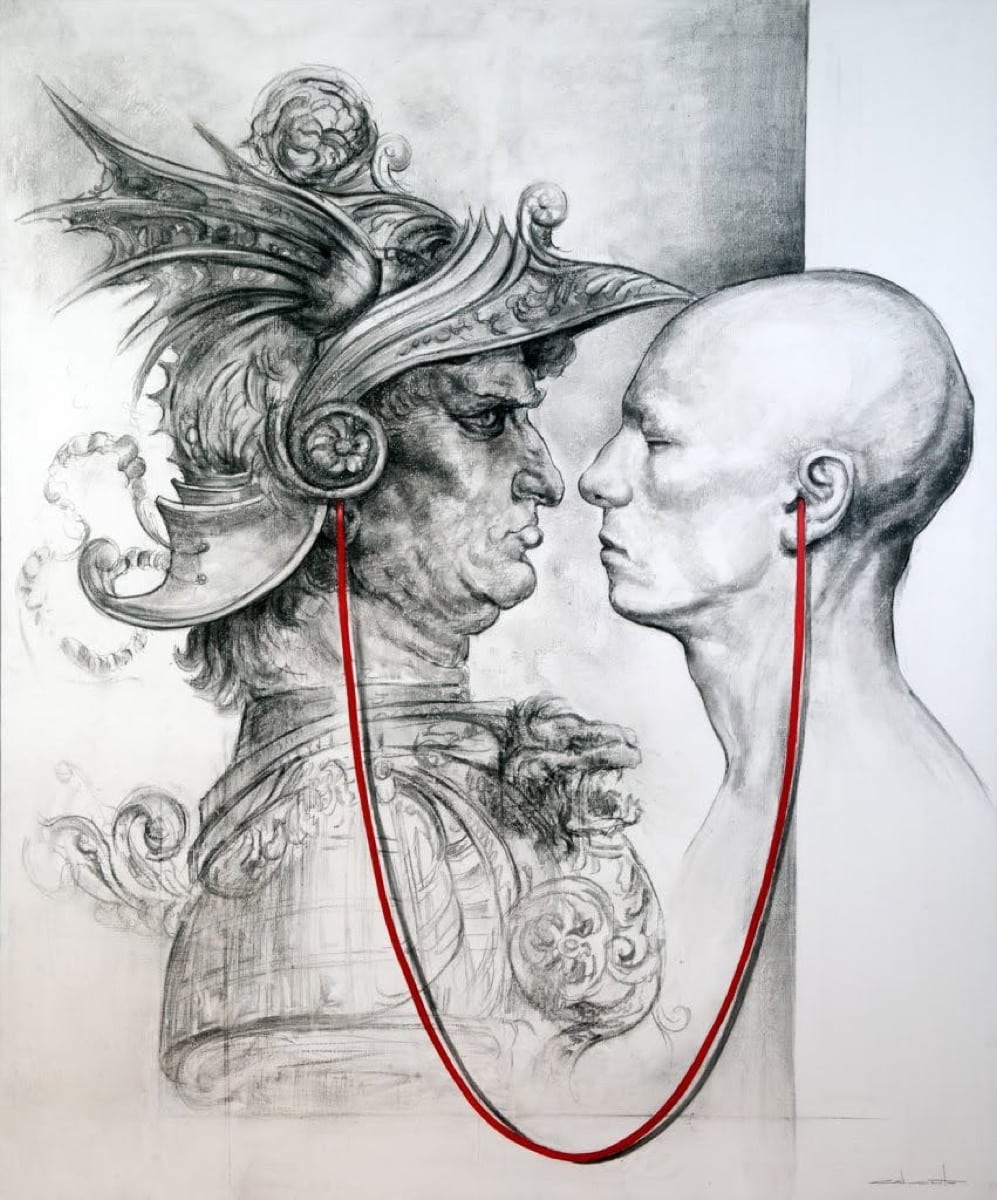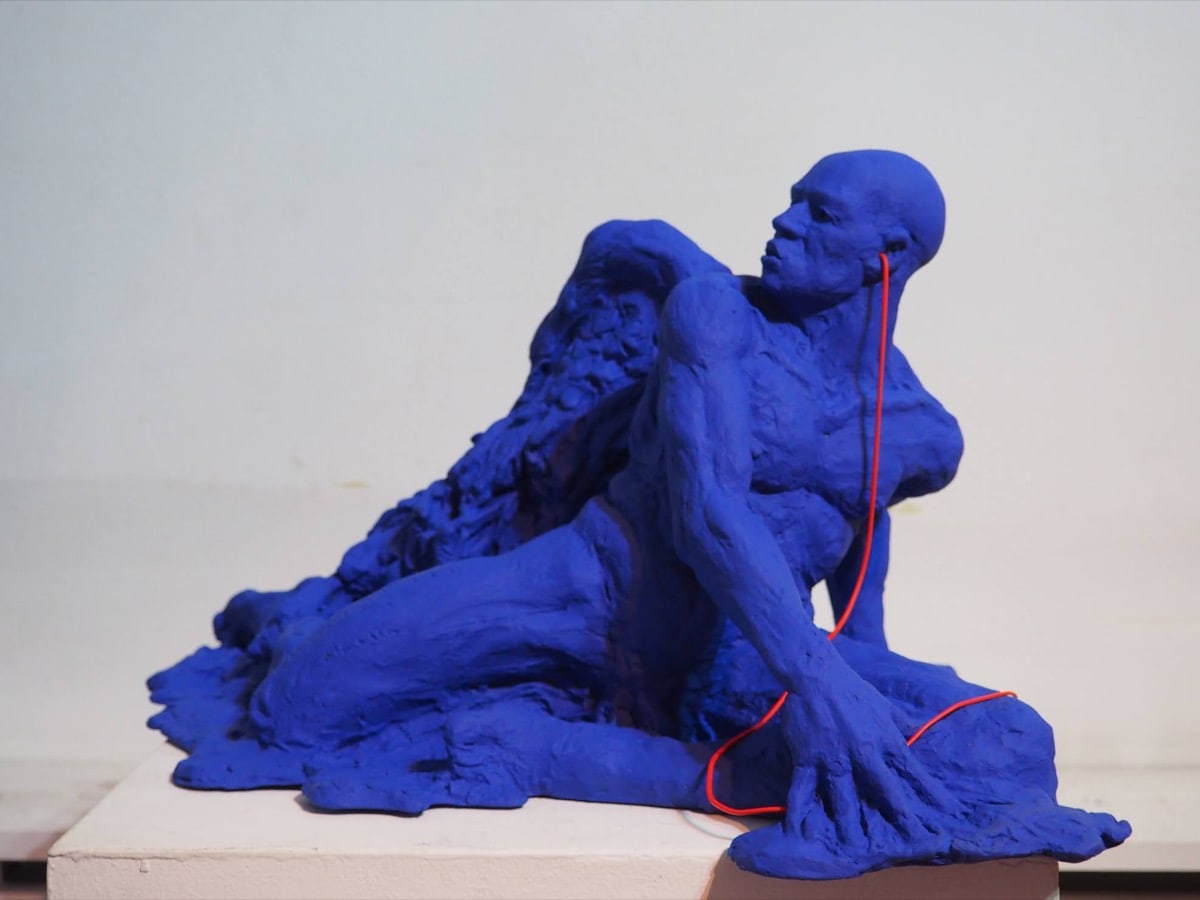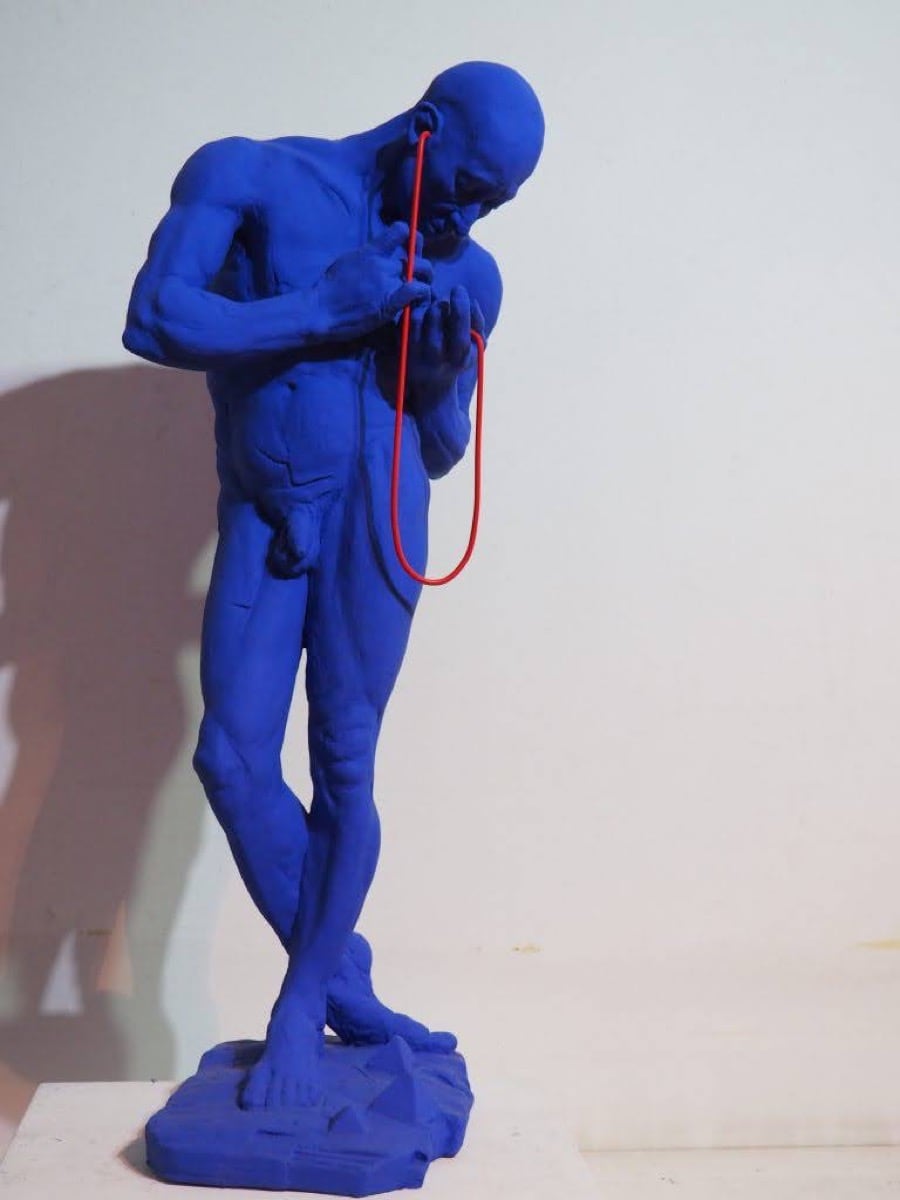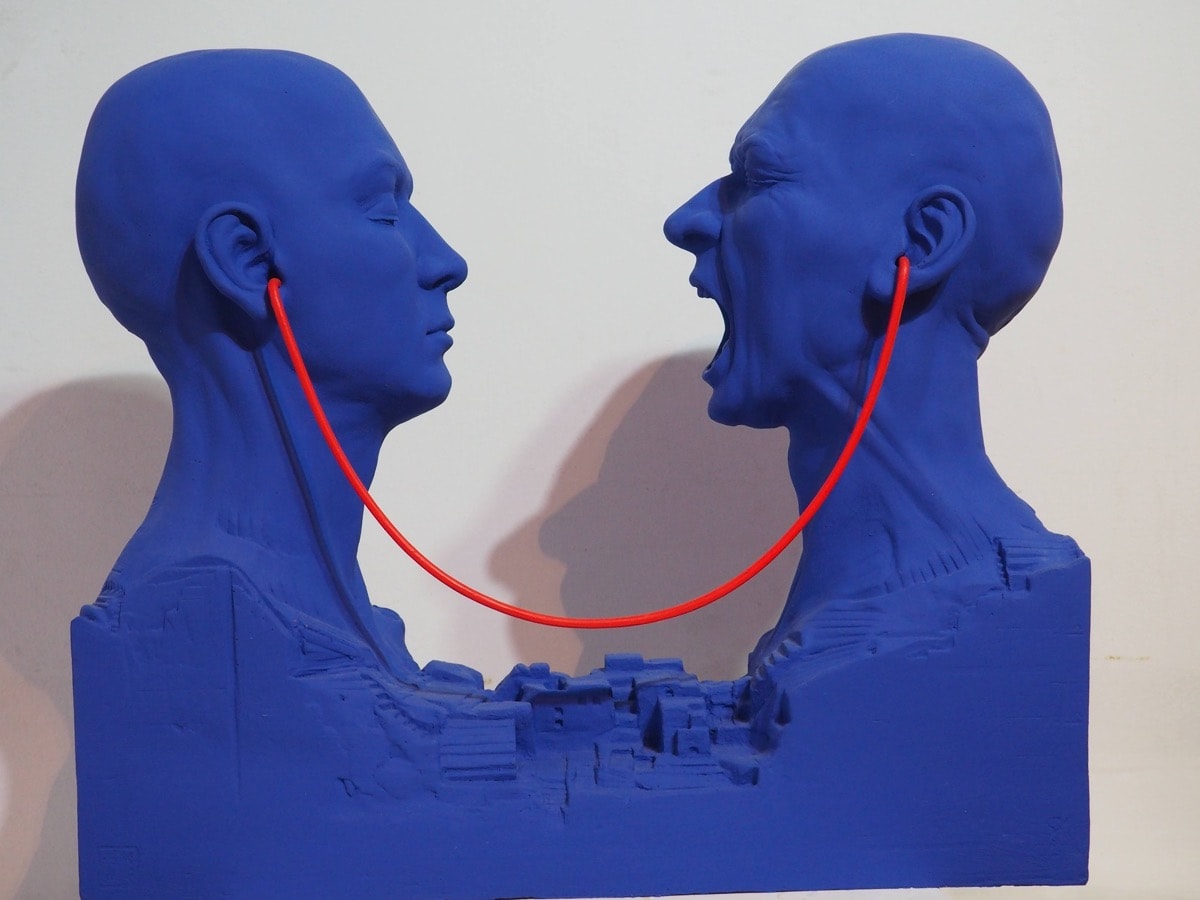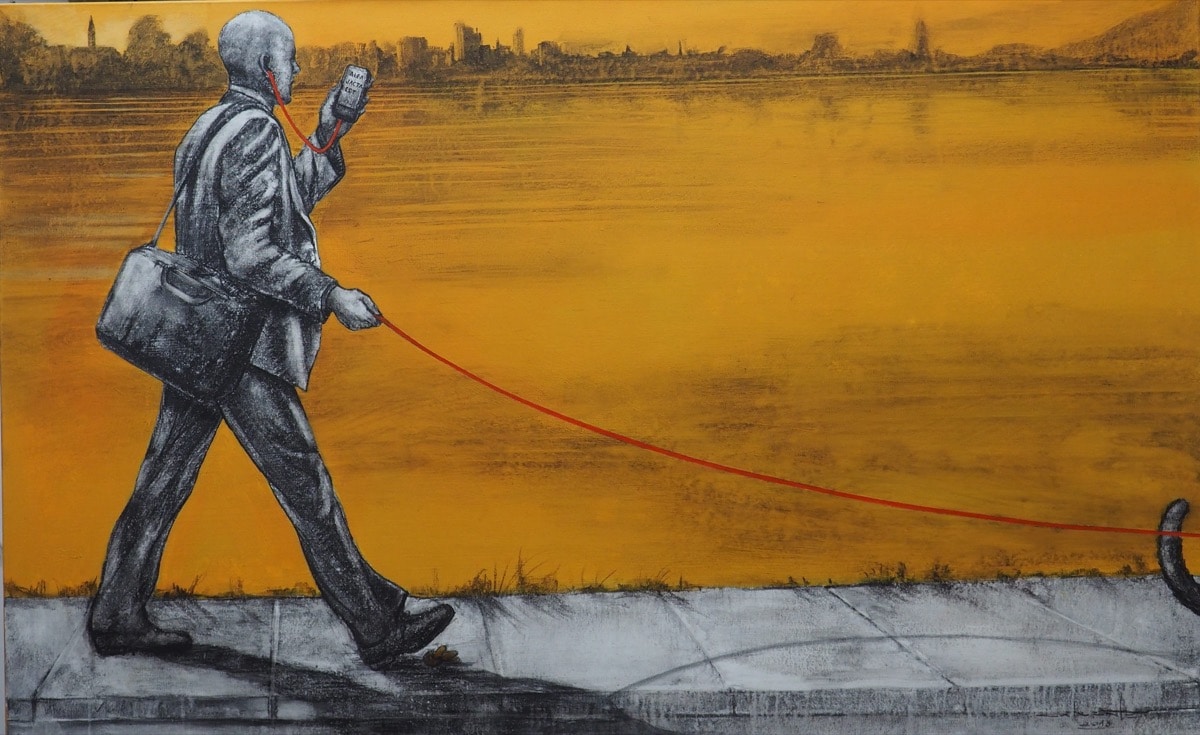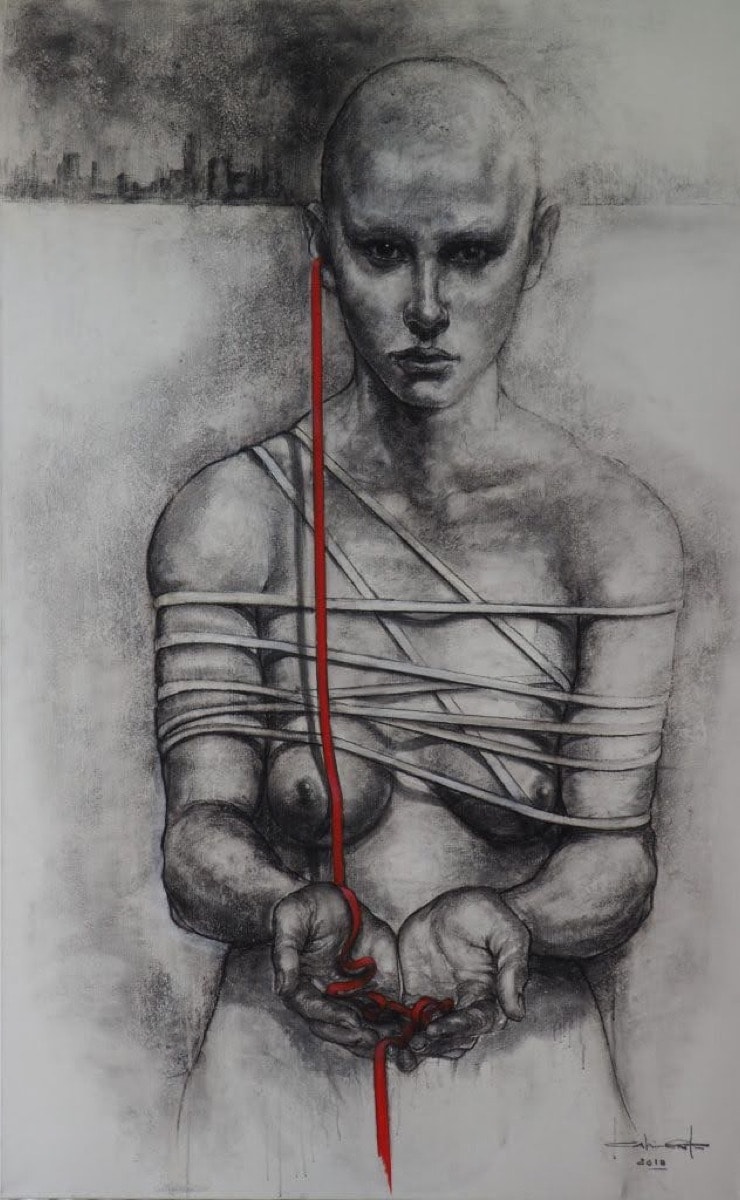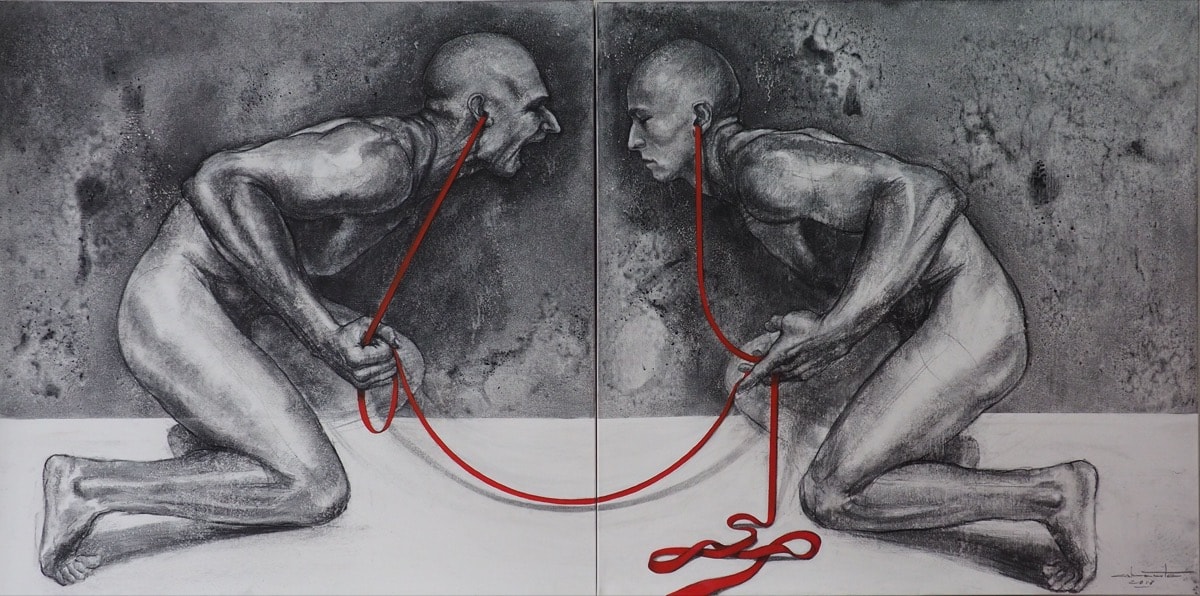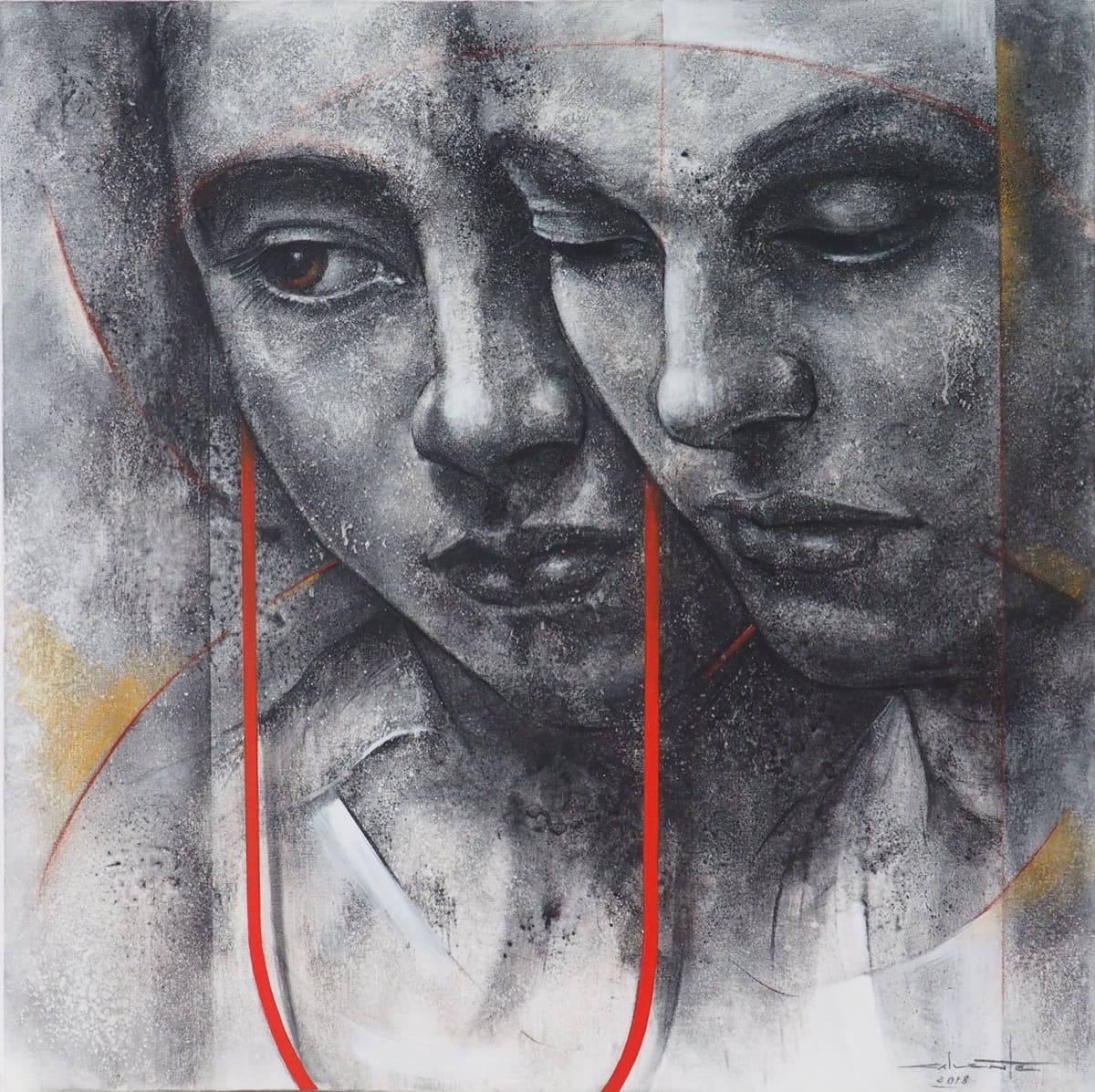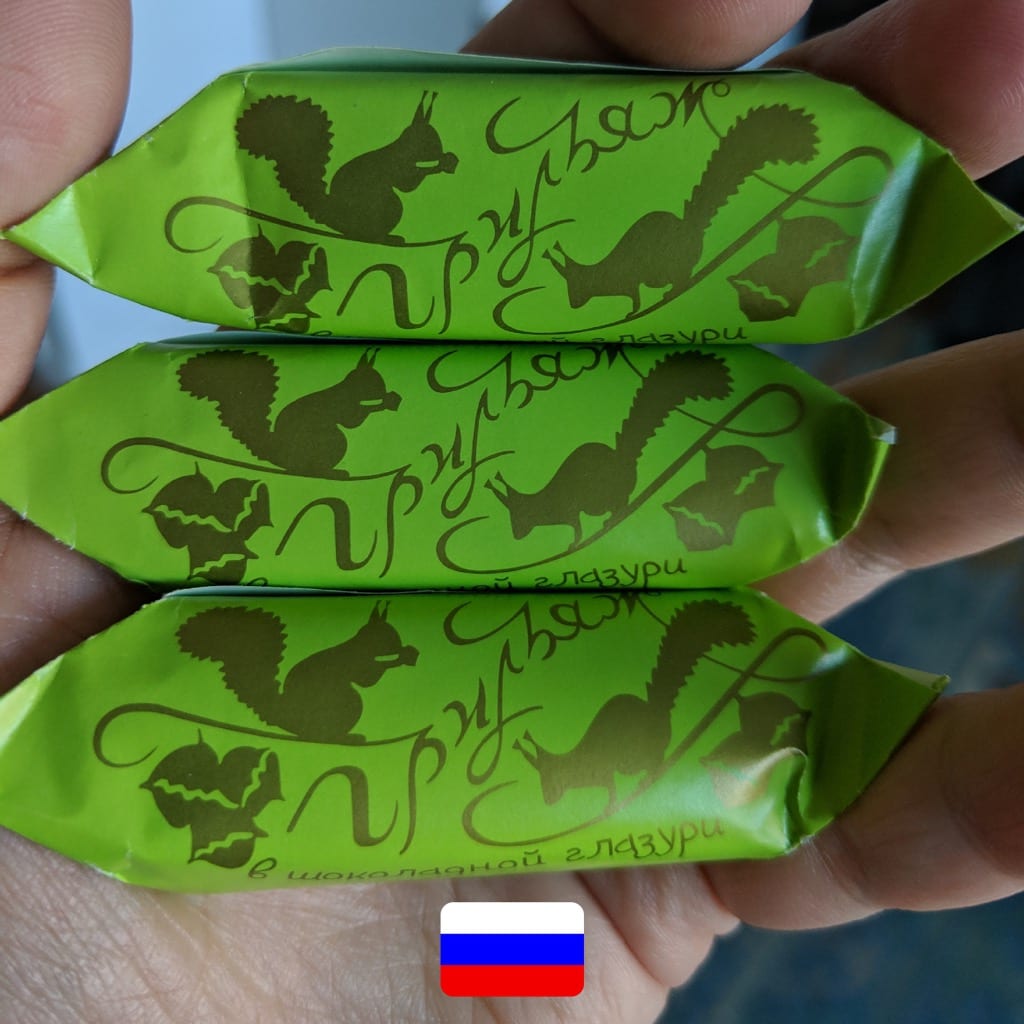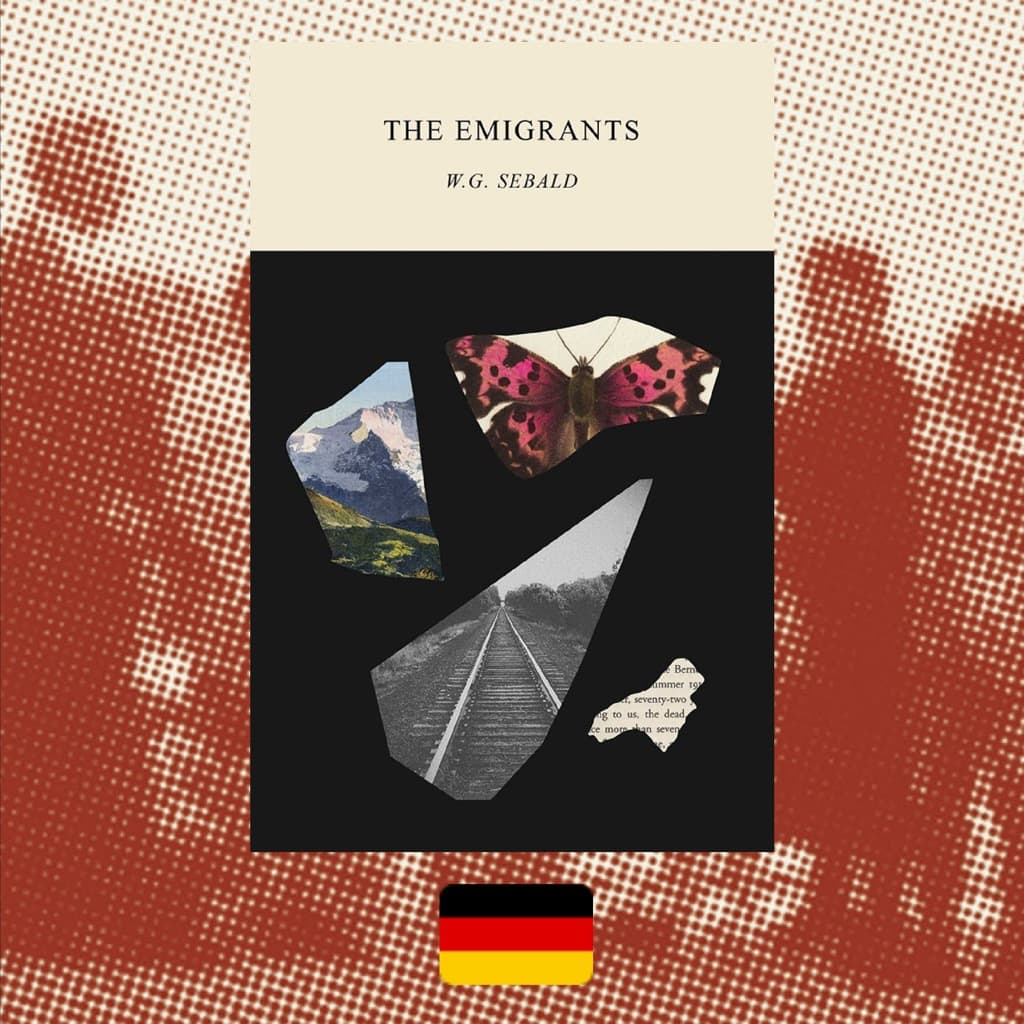The works of this Andorran-Spanish artist are full of classical reverence for the human body and potential, but the reminders of technological subjugation offer a fresh, ominous spin


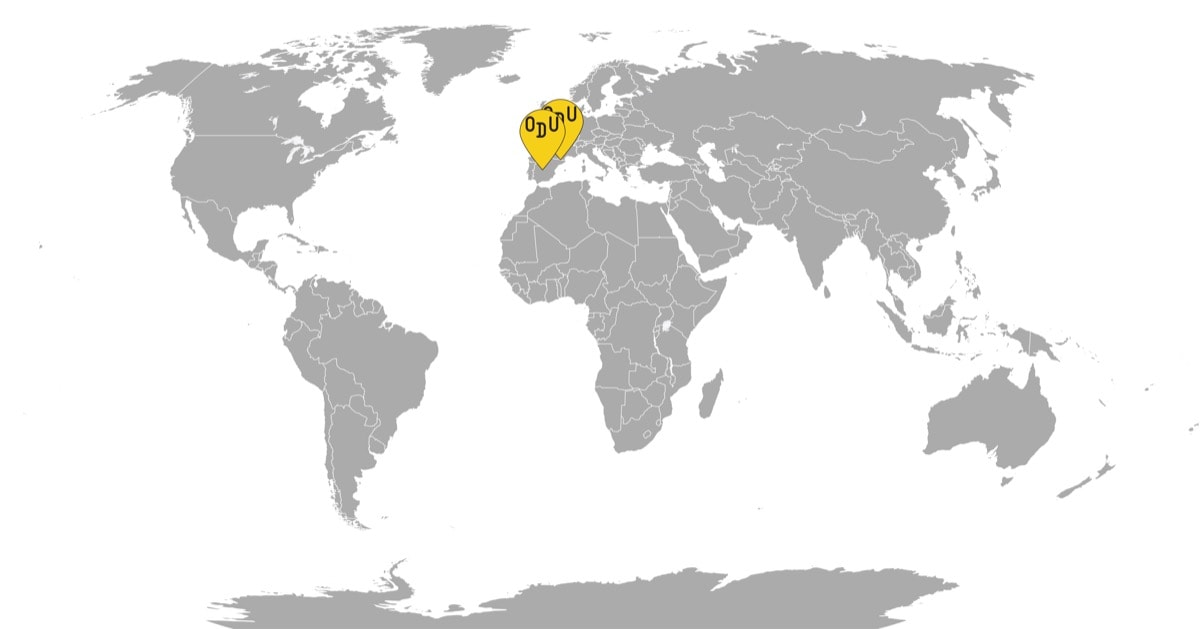
WHAT’S GOING ON: Powerful human figures, expressed in bronze, wood, or experimental resins, or rendered in mixed media paintings, celebrate the raw beauty of the human anatomy, sometimes engorged in the fullness of well-developed limbs and torsos, sometimes stripped to the taut muscle tissue. The subject matter alludes to the art periods where the body was revered, whether through a metaphysical journey of discovery, or a celebration of labor, with pit stops made in the Renaissance, with Rodin, and social realism. But as the artist moves further in his exploration of the body through reenactment, he leans, more and more, towards a theme: each of the seemingly timeless human figures is linked to a red cord of technology as if it were a feeding tube or an umbilical cord. These connections tether them to each other and yet bring them further apart, imposing each into echo-chambers of emotion where co-existence relies heavily on the ability to interpret. Those are the works of Andorran-Spanish Ángel Calvente, who brings modernity and infinity together in his humanistic but deeply critical works.
WHO MADE IT: Ángel Calvente was born in Andalusia but moved to Andorra as a child. He studied art and crafts in Barcelona and Granada for some time, as well as under particular artists, but has been mostly honing his skills on his own accord, which makes him, by his own admission, a primarily self-taught artist. In Andorra, Calvente’s influence is spread widely: from the numerous contributions to the country’s visual landscape, in sculptures at art parks and bas-reliefs on buildings, to the new generation of artists who studied under him. Eagerly participating in various competitions the world over, Calvente has also made his mark on the public art offerings in places as far from his dwelling as China and Canada. Meanwhile, private collections on most continents hold his creations, too. Some of the best known of his works include the sprawling fountain “Calidea and the Ice Lady” in Les Escaldes, which he co-created with Catalan sculptor Philippe Lavaill, and his solo works in which gentle organic forms blend with the nature of the sculpture garden Jardins de Juberri. But it’s with the introduction of his red cords in the series “CommunicArt”—which have since seeped into his other work—that he was able to root his timeless pieces soundly in our time, bridging the epochs.
WHY DO WE CARE: As new forms of sculptural abstraction emerge, sometimes we can’t help but start missing the human form depicted with reverence and passion. In a landscape too often sanitized by puritanism and post-irony, it’s typical to encounter among contemporary sculpture a physical depiction that’s been stripped of its titillating humanity, simplified to a mere, earthless symbol. And as much as we love interpretive sculpture, excursions to the ancient art departments of our favorite museums (or, rather, their online viewing rooms), the richness of Italian Renaissance creations, and the depictions of health, vigor, and labor widespread in the more recent socialist realism make us wish for more contemporary iterations of human physicality. Calvente’s works are rooted in all these historical contexts: sometimes he borrows directly from the playbook of Da Vinci, occasionally he experiments with mythology or proposing a contemporary sort of awkwardness to a historical monumentality. But most importantly, his majestic depictions of industriousness and strife are refreshing reminders of the beauty and potential omnipresent in our human avatars. However, this project’s pathos is also effectively downplayed by his further inquiry into the obstacles our human shells face today, which makes it stand out.
WHY YOU NEED TO PAY ATTENTION: The subjects of surveillance and connectivity of our times are not taken explored in art too much, especially in figurative art: they’re either delegated to the tinfoil hat territory, discussed in a sort of generational divide crankiness, or rendered through a less accessible, detailed abstraction. Ángel Calvente explores this subject in his works with dedication and immersion yet also graceful, apparent ease. The human figures he creates struggle in their invisible chains and the constraints and traumas that the constant bind creates.
A blue resin statue of a female figure is scarred, with deep repressions in the spots where the red cord previously trussed it: it’s been relaxed, hanging loosely from the ear, but the tissue isn’t about to return to its former condition. In the other works, paintings, and sculptures alike, the technological enhancement of existence causes a frenzy, claustrophobia, mania, or lethargy. The various individual reactions vary, but always in a way that profoundly unsettles the viewer. These contemporary Laocoons are not attacked by snakes, and there is no evident agony on their faces. But that makes the situation even more dire and urgent because it’s easy for the danger to evade detection when it becomes a natural part of the everyday.
The present-day mythology which Ángel Calvente instills in his works creates parallel visions of our reality that invite for a step back and a different but honest glimpse into how we exist. Intelligent but also forthcoming, his works possess a striking ability to show just how vigorous our existence can be and just how easy it is to subjugate it when you weaponize what seems ordinary and run-of-the-mill. Infused with a chilling, anticlimactic premonition of the other side of singularity and potently expressed in the most tangible of all art forms, Calvente’s works offer much-needed commentary and a reminder that communication, like art, is best-enjoyed face to face.
For more content like this sign up for our weekly newsletter
MORE ÁNGEL CALVENTE


